COATING COMPARISON GUIDE
The question we get asked most is “what coating should I use?” or “What is the difference between coating x and coating y?”. Well we have created this handy chart for reference. Keep reading below to get more details.
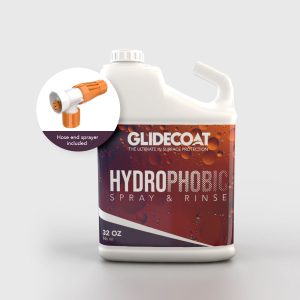 | 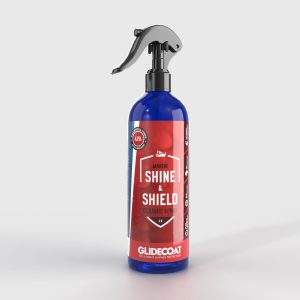 | 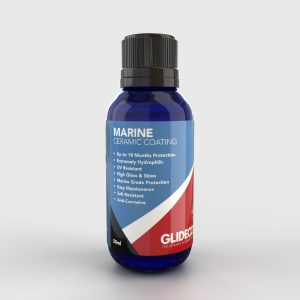 | 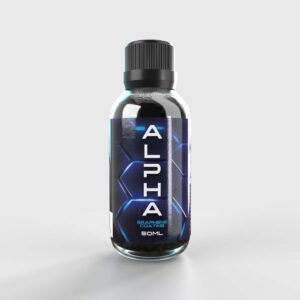 | |
| Product | Hydrophobic Spray & Rinse | Marine Shine & Shield | Marine Ceramic Coating | ALPHA Graphene Ceramic Coating |
| Price | $34.95 (32oz with sprayer) | $32.95 (16oz) | $89 - $1,099 (50mL - 1L) | $79 - $1,295 (30mL - 1L |
| Durability (Marine) | 3 months | 6 months | 12 - 18 months | 24 months |
| Durability (Auto & RV) | 4 months | 8 months | 24 months | 36-60 months |
| Gloss | ||||
| UV Protection | ||||
| Slickness | ||||
| Water Repellency | ||||
| Contact Angle (Water Beading) | 90°+ | 90°+ | 90°+ | 100°+ |
| Shed Angle (Water Shedding) | 45° | 45° | 45° | 30° |
| Chemical Resistance | ||||
| Ease of Application |
Durability
For the most part, durability comes down to the formulation of the coating and has a direct correlation to the percentage of active ingredient. In most cases, the higher the percentage of active ingredient, the longer a coating will last.
Both Hydrophobic Spray & Rinse and Marine Shine & Shield Ceramic Spray are water-based formulas. In order to be sprayed, they must contain less active ingredient. Because they are water based, when compared to Marine Ceramic and ALPHA, they will not bond as well to the surface and do not cure as hard, ultimately making them less durable.
Marine Ceramic and ALPHA are solvent-based formulas with high quality catalysts. The solvents in the coating help keep the high percentage of the active ingredient in a liquid state, allowing you to apply the coating to the surface with an applicator sponge and buff it off with relative ease. Without these solvents, applying a ceramic coating would be nearly impossible, like trying to apply glue or molasses to paint or gel coat. Once the coating has been applied, the catalysts take over. These catalysts help expedite the curing process of the active ingredient, once exposed to oxygen. During this curing process the ceramic coating transforms from a liquid state into a solid, bonding directly to the surface it was applied, filling in the microscopic pores. Because they cure harder and bond to the surface, they are less susceptible to abrasion and will be more durable and last longer. ALPHA, with the addition of graphene, cures harder than our Marine Ceramic coating making it the most durable option.
Ease of Application
For each coating, there are different prep requirements and application methods:
Hydrophobic Spray & Rinse is applied as the name implies, by connecting the coating to a hose using the included hose attachment and spraying onto the surface of your boat/vehicle (you can watch an application video here). After the coating dwells for a minute, simply rinse away and your boat/vehicle is protected. Even with the recommended drying with a microfiber cloth or chamois, this is still by far the easiest application of all of our coatings. In addition you can coat 10’ by 10’ sections in just a few minutes, making it much quicker to apply than our other coatings.
Shine & Shield Ceramic Spray is applied by spraying onto the surface and then buffing with a microfiber cloth (you can watch an application video here). This ensures that the coating is smooth and uniform and any excess product is removed from the surface. Typically, this application will take about 30 minutes to an hour, depending on what you are applying it to.
Standard prep for a spray application is to wash the vehicle, boat or RV with soap and water, then apply the product to a clean, dry surface. It is not required to remove surface imperfections, such as swirl marks and scratches for you to see the benefits of our spray coatings, but for optimal results it is recommended.
Marine Ceramic and ALPHA applications are much more labor intensive and require a greater level of prep to achieve optimal results. Because these coatings are providing a hard protective layer on the surface which will last for multiple years, it is important to remove any surface imperfections before applying a ceramic coating. If you do not remove these imperfections before applying the coating, it will make these imperfections tougher to remove in the future. Surface imperfections may also affect the overall performance of the ceramic coating (durability, protection, gloss and hydrophobic qualities).
Standard prep our ceramic coatings include: Washing, clay bar (for vehicles), compounding and polishing the surface, decontaminating the surface with an alcohol based cleaner, then applying two coats of the ceramic coating. While this process may seem long and arduous, you are rewarded with an extremely glossy surface that is protected for years instead of months.
For a car or truck, a ceramic application will take approximately 3-6 hours depending on the amount of prep, whereas boats and RVs can take several days depending on the size and amount of prep required.
GLOSS & HYDROPHOBIC PROPERTIES
Gloss and hydrophobic qualities (slickness, water beading and shedding) are two of the most advertised properties in a ceramic product. People love to see their vehicle, boat or RV shine and watch the water beading on the surface. The truth of the matter is, all of our products will provide a glossy and hydrophobic surface.
To the naked eye, the difference in gloss may seem minor. When applied to the same surface, Shine & Shield and Hydrophobic Spray and Rinse will read 5%-10% less gloss when measured with a gloss meter, compared to Marine Ceramic and ALPHA. The hard protective layer of a ceramic coating adds a deeper level of gloss, and in most cases, with the addition of added polishing and compounding steps, it will appear visually much glossier.
The hydrophobic properties are important because the water beading and shedding off the surface means less water spotting, it’s easier to dry, it makes the surface “self-cleaning” reducing the need for washing, and reduces oxidation and fading.
But beyond that, it is a visual representation of the durability of the coating. Once the coating stops beading water, it is time to reapply. That said, the spray coatings will lose their hydrophobics sooner.
The ALPHA formulation actually creates a surface that has a higher contact angle, meaning it is more hydrophobic. There is less contact between the water and the surface so it sheds easier, leaving less water on the surface.
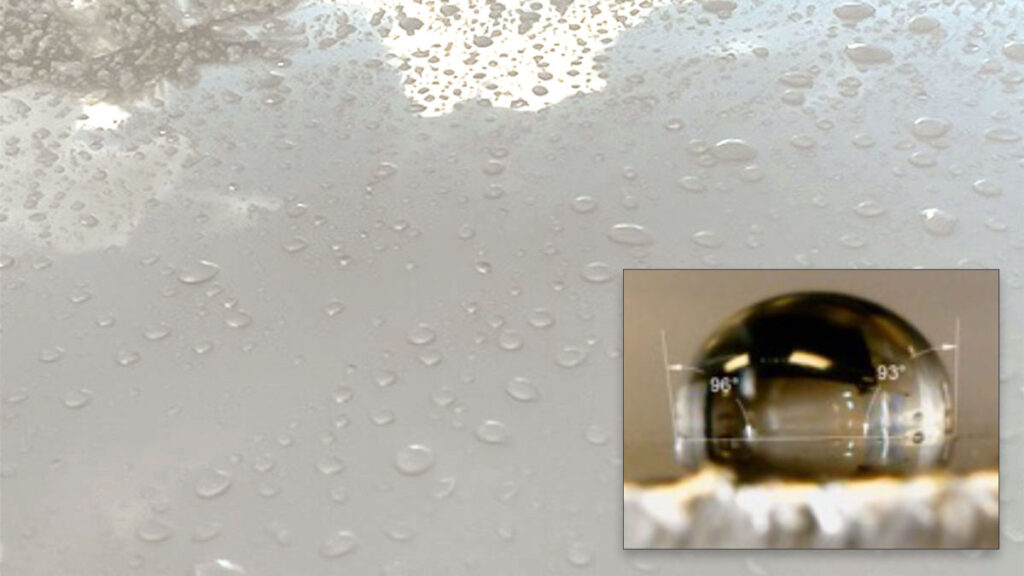
The above image shows a close up of a water bead on a ceramic coated surface. This clearly shows the contact angle.
UV Protection
Although all of our coatings provide UV protection, it is the formulation of the product that really defines the level of protection. SiO2, the active ingredient in Hydrophobic Spray and Rinse and Shine and Shield, blocks UV light from penetrating the surface by reflecting the UV rays. But because Shine & Shield has a higher level of SiO2, it does a better job of protecting against UV.
Marine Ceramic and ALPHA, because of their higher percentage of active ingredient provide a better layer of protection. ALPHA also contains Graphene oxide which helps the coating form a denser, more uniform layer of protection. This tighter structure does a better job of blocking UV rays from penetrating through to the paint layer and damaging the surface underneath.
